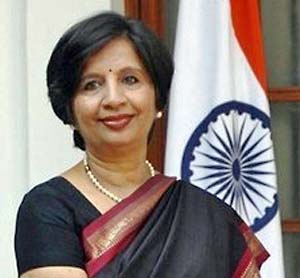The road to becoming the Indian Foreign Secretary most certainly runs through the ambassadorships in Beijing, Islamabad and probably Kathmandu and Colombo. Nirupama did Beijing and Colombo and now after a successful stint as Foreign Secretary, is slated to become India’s most high profile ambassador – in Washington. It is customary to say that appointments like these take place at a critical or crucial juncture. Is it a crucial time? Not more than at any other time.
 Although a number of reasons can be found to explain why the Indo-US relationship is currently in a parlous condition. The biggest blow comes undoubtedly from the elimination of the U.S. from the MRCA competition, quite probably for purely technical reasons. But there is another side to the Nirupama story. That is the story of the U.S. ambassador in New Delhi. After the performance of absolute cracker – Jacks like Robert Blackwill, Frank Wisner, Dick Celeste and many others, the performance of the current US ambassador in Delhi has been entirely forgettable. If it meant much to the U.S. to get short listed in the MRCA competition, one wouldn’t have guessed so from the activities or the lack of them at Roosevelt House. The U.S. ambassador’s office and residence was constantly buzzing during the time of the U.S. nuclear deal, but that was probably a stunning one – off performance – when the U.S. embassy mustered a huge public relations campaign on behalf of the deal, and followed it up with a command performance at the NSG waiver at Geneva.
Although a number of reasons can be found to explain why the Indo-US relationship is currently in a parlous condition. The biggest blow comes undoubtedly from the elimination of the U.S. from the MRCA competition, quite probably for purely technical reasons. But there is another side to the Nirupama story. That is the story of the U.S. ambassador in New Delhi. After the performance of absolute cracker – Jacks like Robert Blackwill, Frank Wisner, Dick Celeste and many others, the performance of the current US ambassador in Delhi has been entirely forgettable. If it meant much to the U.S. to get short listed in the MRCA competition, one wouldn’t have guessed so from the activities or the lack of them at Roosevelt House. The U.S. ambassador’s office and residence was constantly buzzing during the time of the U.S. nuclear deal, but that was probably a stunning one – off performance – when the U.S. embassy mustered a huge public relations campaign on behalf of the deal, and followed it up with a command performance at the NSG waiver at Geneva.
Since then it’s all been downhill. No visiting congressmen in Delhi – or if there were, they kept a low profile. The result of all this is that Nirupama Rao has a job in hand- putting some heat into the relationship. As the PR blurbs say, the Indo- U.S. relationship is so multi-faceted that many parts of it run on automatic. So if the U.S. didn’t get the MRCA, it did get the torpedo deal, the C -17 deal and will probably get the howitzer deal. Institutionally the Indo-US relationship is incredibly strong, running as it does through 13 forums or dialogues. These include the Strategic Dialogue, Foreign Office Consultation, Defence Planning Group, Joint Working Group on Counter Terrorism, the US-India Economic Dialogue, the CEO Forum, The Trade Policy Forum, The Energy Dialogue, Global Climate Change Dialogue, Information & Communication Dialogue, Science and Technology Forum, Education Dialogue and Health Cooperation Framework. That list should knock anyone out – but more importantly demonstrates how many joint bodies can be set up to produce very pedestrian results. In the entire run-up to the Obama visit probably one or two of these forums actually produced tangible agreements for the heads of state to sign.
The question also arises rather sharply, that if the state to state relationship runs through 13 standing forums, what can one ambassador do? Actually, she can do a lot. Because if even one or two of these forums actually click, the results can be spectacular. But this raises the important issue, of how much of the relationship is ‘managing’ and how much is old fashioned ‘diplomacy’? It probably is still a mixture, with more and more work between the two countries being conducted ‘outside’ the embassies and through the forums and through communities. Actually it was a US congressman (unnamed) who came to Delhi may years ago and said that U.S. foreign policy is controlled more through congress. According to him, other countries need to imitate China, in building up lobbies within congress rather than running formal diplomacy through the Embassy. This may or may not be true, but Nirupama has very little time to find out as she heads West to represent India in Washington. We certainly don’t want to repeat the NRI ambassador fiasco but if Nirupama can yet go beyond Foggy Bottom to get to grips with her job it would be worth watching.
